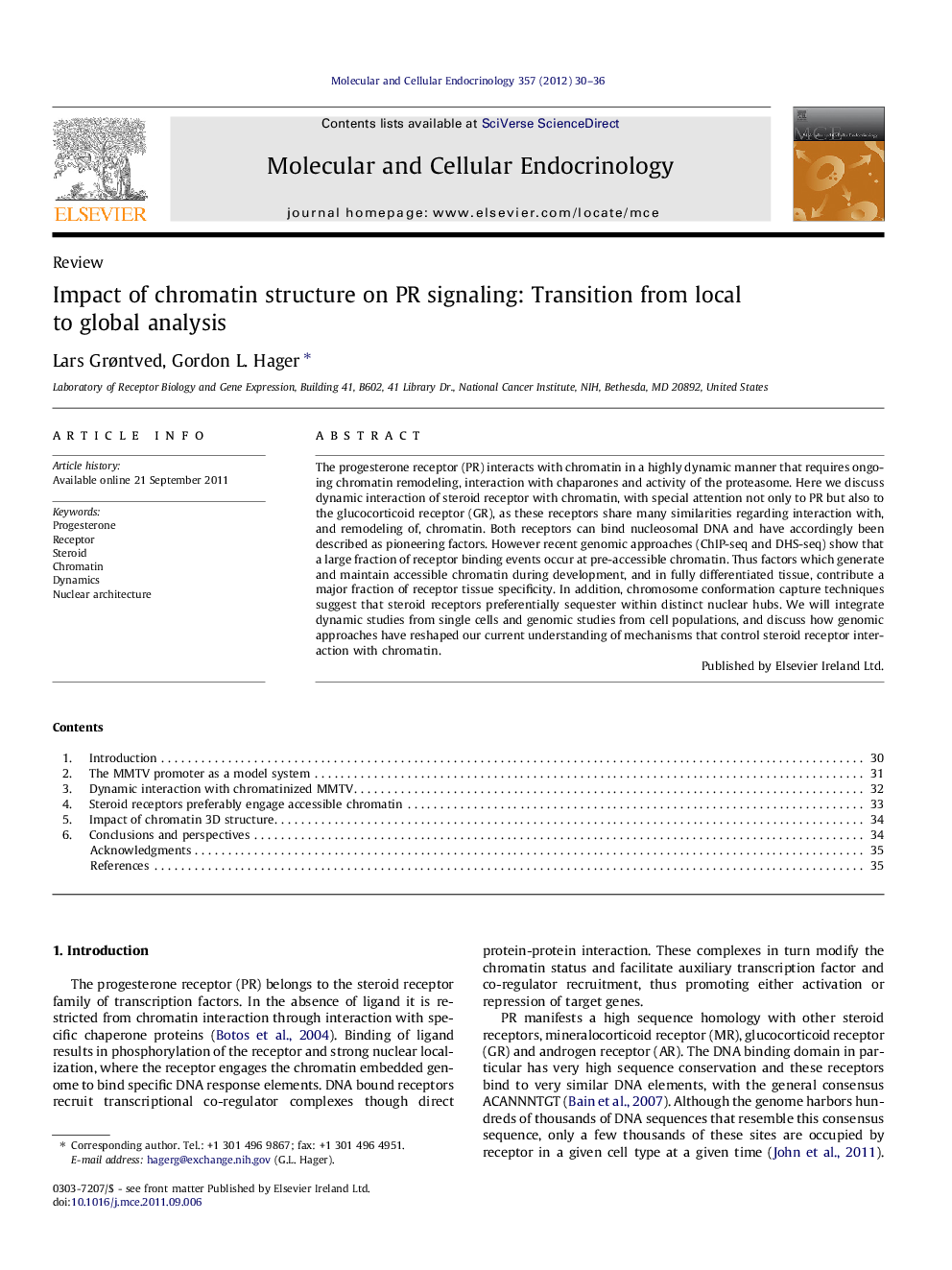| Article ID | Journal | Published Year | Pages | File Type |
|---|---|---|---|---|
| 2196323 | Molecular and Cellular Endocrinology | 2012 | 7 Pages |
The progesterone receptor (PR) interacts with chromatin in a highly dynamic manner that requires ongoing chromatin remodeling, interaction with chaparones and activity of the proteasome. Here we discuss dynamic interaction of steroid receptor with chromatin, with special attention not only to PR but also to the glucocorticoid receptor (GR), as these receptors share many similarities regarding interaction with, and remodeling of, chromatin. Both receptors can bind nucleosomal DNA and have accordingly been described as pioneering factors. However recent genomic approaches (ChIP-seq and DHS-seq) show that a large fraction of receptor binding events occur at pre-accessible chromatin. Thus factors which generate and maintain accessible chromatin during development, and in fully differentiated tissue, contribute a major fraction of receptor tissue specificity. In addition, chromosome conformation capture techniques suggest that steroid receptors preferentially sequester within distinct nuclear hubs. We will integrate dynamic studies from single cells and genomic studies from cell populations, and discuss how genomic approaches have reshaped our current understanding of mechanisms that control steroid receptor interaction with chromatin.
► Steroid receptors interact with chromatin in a highly dynamic manner. ► Dynamic interaction with chromatin requires remodelers, chaperones and the proteasome. ► Genome wide occupancy of receptor correlates strongly with chromatin accessibility. ► Factors that control chromatin accessibility regulate receptor occupancy and activity. ► Accessible chromatin is clustered in hubs in the three dimensional nuclear space.
